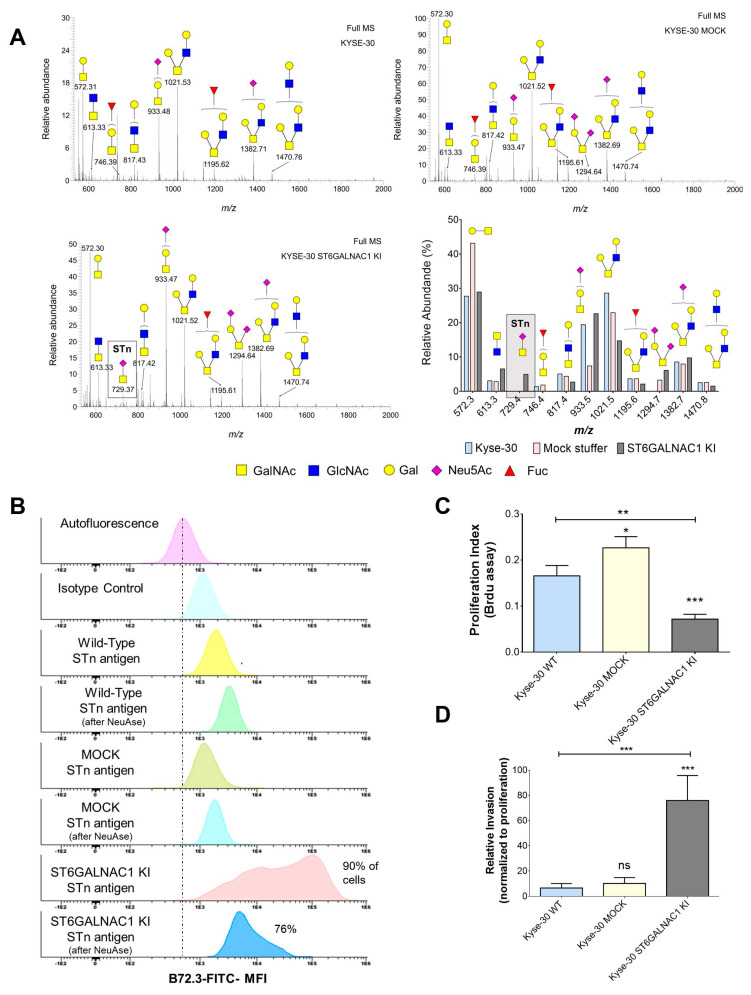Figure 2.
The stable transfection of ST6GALNAC1 leads to STn expression in Kyse-30 cells without inducing profound glycome remodeling and induces a massive decrease in proliferation and a significant increase in invasion. (A) Kyse-30 cells express elongated O-glycans and do not express STn, whereas Kyse-30 ST6GalNAc1 KI express STn with minor alterations in the glycome. Glycomics analysis on Kyse-30 revealed a glycome dominated by several core 2 O-glycans (m/z 817.43; 1021.53; 1195.62; 1382.71; 1470.76) as well as T (m/z 572.31) and sialylated T antigens (m/z 933.48). Core 3 was also detected. (m/z 613.33). Mock cells presented a similar profile, even though showing the T antigen (m/z 572.3) as major ion and presenting low amounts of di-sialyl-T (m/z 1294.7). Neither wild type nor mock cells expressed the STn antigen (m/z 729.4). On the other hand, ST6GALNAC1 transfected cells presented a glycome very similar to wild type cells but were the only cells expressing STn (m/z 729.4). (B) Flow cytometry analysis confirms the low STn levels in Kyse-30 and the massive increase in this antigen after stable transfection with ST6GalNAc1. The stable transfection with ST6GALNAC1 leads to a significant increase in STn in almost 90% of the cells. The signal significantly decreases with the removal of the sialic acid after sialidase (NeuAse) digestion, confirming the presence of STn. Notably, the extension of NeuAse digestions is never complete, explaining the presence of lower amounts of STn in the cells after treatment. (C) The overexpression of STn resulting from ST6GalNAc I overexpression leads to a massive decrease in proliferation. (D) The overexpression of STn resulting from ST6GalNAc I overexpression leads to a massive increase in invasion. ns: not significative; * p < 0.05; ** p < 0.01; *** p < 0.001; Mann-Whitney for three independent replicates in proliferation assays and five independent replicates in invasion assays.

